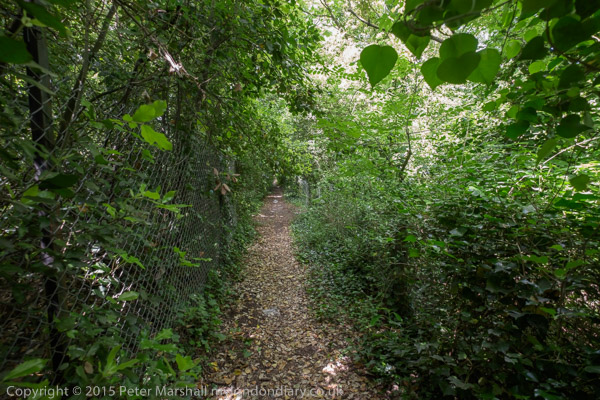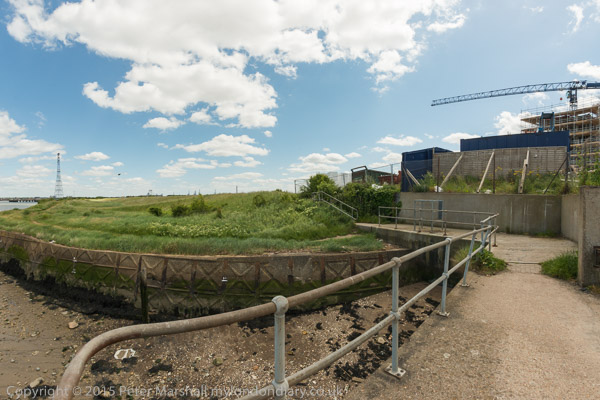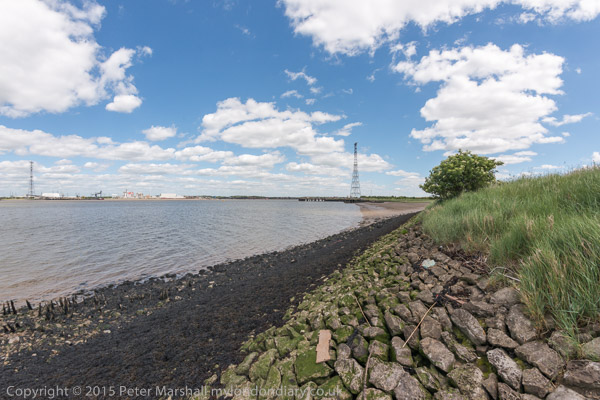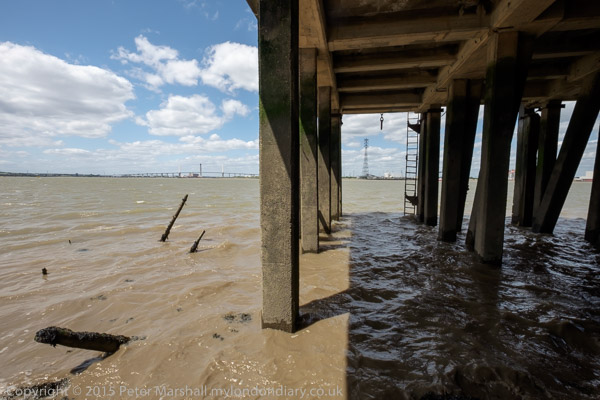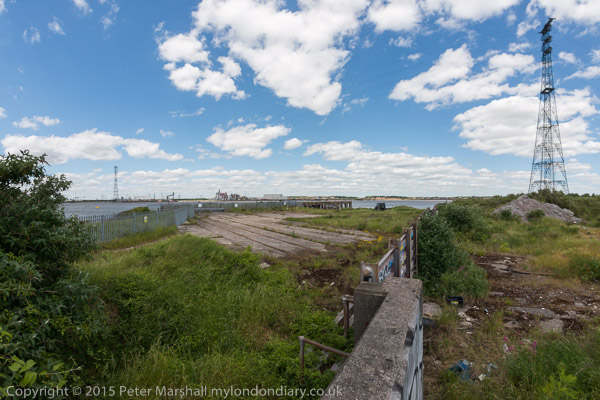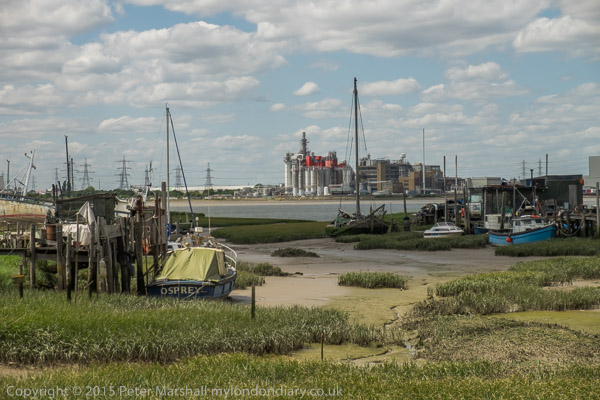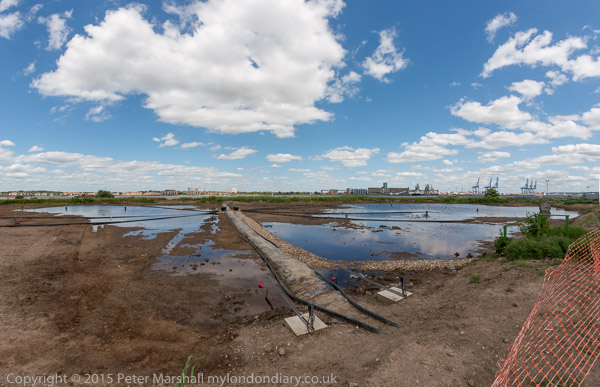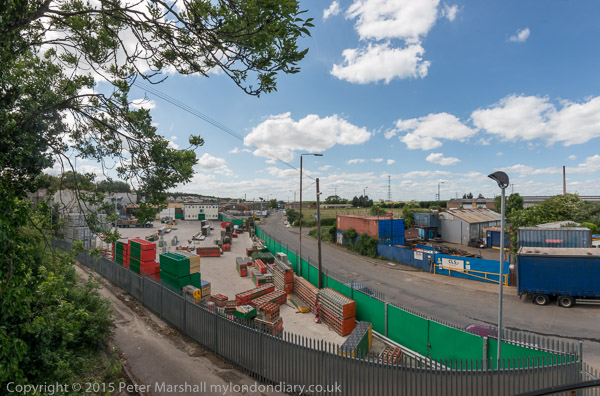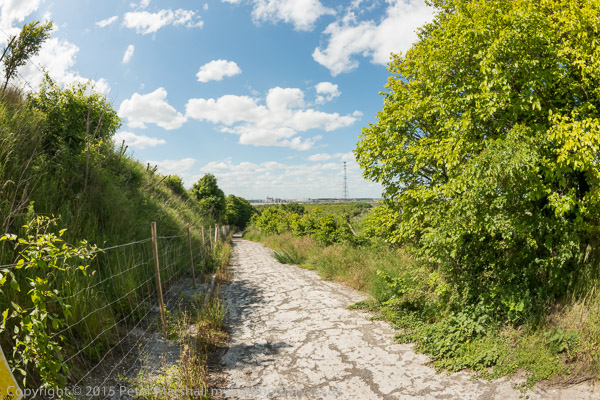Mostly I’ve photographed London over the past 50 or so years, with just a few earlier pictures that I think I have lost, including the first film I ever had processed, of ancient oak trees in Richmond Park back in 1962. It cost me 17s 6d to get it processed and it was years before I could afford to do more. I think all of the pictures are now lost. But I have also photographed elsewhere, particularly in Hull and Paris, and also on a number of holidays, some where I’ve perhaps taken photography more seriously than others. But I’ve always had a camera with me.
A few of those holidays have been cycling holidays, including a ride up the Loire valley and a couple of others in northern France. France is a better place to cycle than the UK for various reasons. It still has mile after mile of largely empty rural roads and French drivers have a much more positive attitude towards cyclists. More of them are cyclists themselves or have been.
One such holiday was in late August 1993, when I went with my wife and two sons, aged 14 and 17 to northern France. Our rides were fairly leisurely with not the slightest whiff of Lycra and frequent stops for me to repair the punctures of the others or carry out other running repairs. My own bike, a 1956 Cinelli bought secondhand for me by my eldest borther for my 13th birthday performed without any such problems. I’ve recently scanned and put the pictures from our holiday into a Flickr album.
Two things made that difficult. One was the poor trade processing of the colour negative film I used, with one film having two large gouges across most frames along with some other damage which required extensive digital retouching. I tried out Photshops new AI filter which removed them perfectly – but also took out some other parts of the image, so I went back to doing the job manually.
But what took as much or rather more time was trying to identify the locations for many of the images. I’ve done my best, but some are still rather vague and others may be wrong. I’m hoping that some viewers on Flickr will help and tell me more. If you know the area around Calais, Ardres, St Omer, Arques and Cassel please do take a look. The pictures are rather mixed up in order, and I was using two cameras, both with colour negative film, for reasons I can not now understand.
On 23 August 1993 we made an early morning start on a train to Clapham Junction and rode from there to Victoria. The train to Dover and the crossing to Calais for the four of us cost £42 for a fivee-day return ticket and our bikes travelled free. We arrived in mid-afternoon and an easy ride took us to the hotel we had booked in Ardres.
The following day was a more difficult ride, and we had a nasty few minutes when Joseph’s chain came off and jammed between sprockets and hub far from any town or village, close to the high speed line then being built for Eurostar, work on which had involved us in a number of detours, and for years I’d look out of the window a few minutes after we came out of the tunnel and recognise the short uphill stretch were it happened.
Eventually after much sweating I managed to free it and we could proceed. For some reason we had decided to visit the Blockhaus d’Eperlecques, built in 1943 as a base to launch V2 rockets at Britain, but destroyed by bombing and now a French National Monument with some very large holes in its concrete roof.
Our route to it involved a rather large hill but we were able to rest a bit and look around the site before continuing on our journey to St Omer. Here we found another slight problem with our French map, which showed what looked like a nice quiet route on to Arques. It turned out to be an abandoned railway track, complete with sleepers and impossible to ride. After struggling for a while we turned back and took the N42 instead and soon reached Arques.
At Arques we were just in time for the last guided tour of the day of the 1888 boat lift, L’Ascenseur à Bateaux des Fontinettes, modelled on the Anderton lift in Cheshire, replacing 5 locks and taking 22 minutes to transfer boats up and down by 13.13 metres – 43 ft. It was closed in 1967 as traffic had grown considerably and replaced by a single modern lock.
At Arques we had booked a three night stay at ‘A la Grande Ste-Catherine’ . Including breakfasts for us all and a couple of dinners for the two of us (our two sons wouldn’t eat proper French food) this cost 1832 Francs, then a little over £200. They ate frites and burgers from a street stall, though one night we did all manage to find food for all of us at a supermarket restaurant.
The next day we returned to look around St Omer, and then rode to Tilques, abandoning saddles for a boat trip around le Marais Audomarois, one of the more interesting parts of our visit.
And for our last full day in France we took a ride to Cassel, a town on a hill that rises to the highest point on the Plain of Flanders, surrounded by flat lands in all directions, taking an indirect route via the Forêt Domaniale de Rihoult (Clairmarais), rather disappointing as it was full of noisy schoolkids from their colonies de vacances.
It was a struggle up the hill to Cassel, and we were glad to rest for a while at the cafe inside the grim fortress of a Flemish language radio station – former a casino and I think the local Gestapo headquarters. Our ride back to Arques was by the direct route and began with a long downhill stretch where no pedalling was needed for a very long way.
Finally came our last day, and I planned an easy route back to Calais, mainly beside canals. But the others objected and demanded a visit to the Eurotunnel exhibition on the way, which held us up considerably, not least because most of the roads had been diverted to build the high speed line and our map was fairly useless. We finally managed to catch the 19.15 ferry, a few hours before our ticket expired.
Many more pictures in the Flickr album Northern France – St Omer.





















































